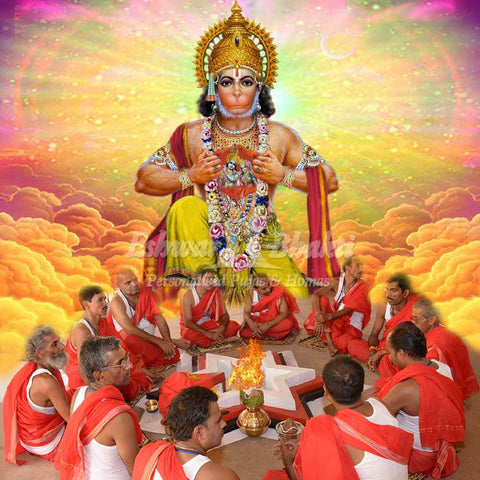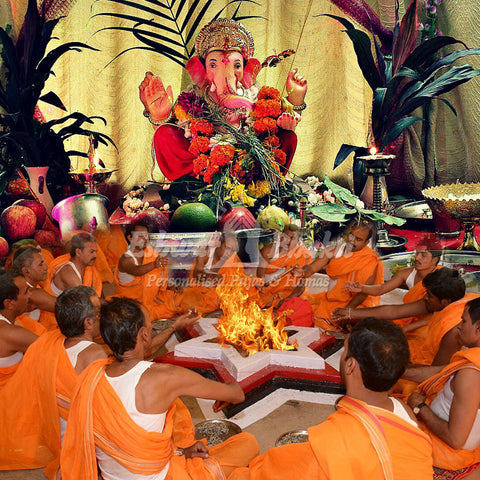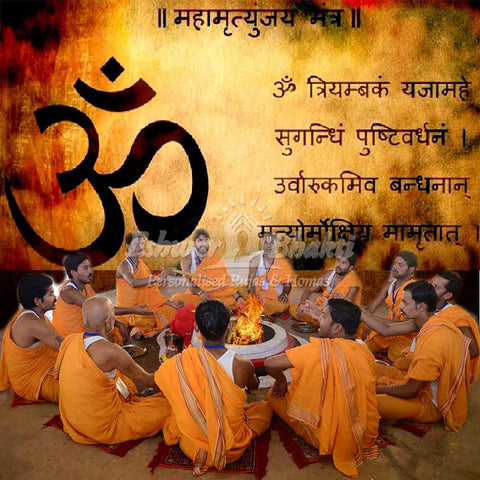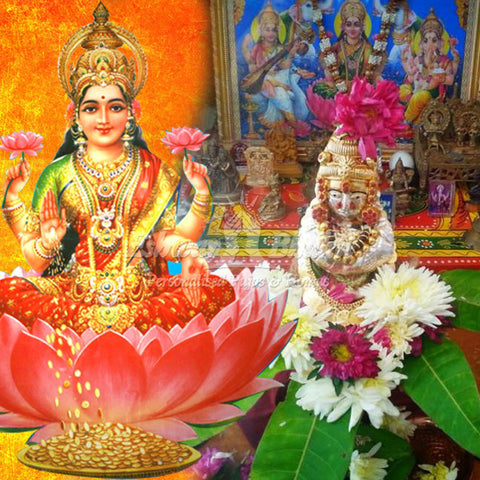What's Consecration?
Pran Prathistha, also known as Murthi Sthapana, is a practice in Hinduism and Jainism. It is the consecration of a Murthi (deity idol) in a temple with the accompaniment of Mantras and hymns. When the priest or Purohit performs the rites, the idol converts into a deity by the invocation of life energy or Prana. There are elaborate discussions in different Vedic and ancient scriptures on the importance as well as the ways of conducting the Pran Prathishta.
In Tantra-Tattva, Prana Prathishta is a ritual meant to introduce life into a Murthi (deity idol). Not everyone can conduct Pran Prathishta. As per Vaishayasi Samhita of the Panchratra Agam Shastra, "One in whose every organ Paramatma resides wholly, that pure Mahapurush is eligible to perform Prana Pratishta because one who can invoke Paramatva within his heart to the Murti can offer it."
The word Prana refers to life energy, and Pratishta means resting or position. In this very context, Pratishta is the installation or consecration.
Difference between Pratishta and Pran Pratishta: There are some differences between Pratishta and Pran Pratishta. With Pratishta, constant maintenance is essential. It is one of the reasons why keeping a stone or marble idol in our house is not encouraged. If one fails to take proper care of the Murthi with the right Mantras and Pujas, it could lead to the withdrawal of the energy. It can also cause harm to those who live near the idol. Pran Pratishta is an essential alternative, where the devotee or the priest consecrates the deity with life energies. Here, we are placing the Murthi forever, and constant maintenance is not necessary. Though before Pran Pratishta, we have to conduct different procedures to ensure the proper flow of energy from Satpurush or the person consecrating the Murthi.
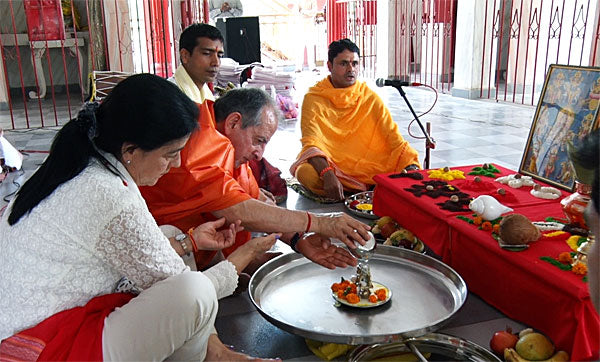
Procedures or parts included in Murthi Pratishta (before Pran Pratishta): Prior to Pran Prathishta of a Murthi, there are some procedures to be conducted. They are Karmakutir, Jaladhivas, Dhanyadhivas, Ghrutadhivas, Snapan or Abhishek, Netra Anvarn, Shodshopchar Puja, and finally, Pran Prathishta. Here are the detail about these procedures that Purohit has to perform before the consecration of the deity and the invocation of the divine as well as spiritual elements.
1. Karmakutir - It is the process of purifying the idol from the artisan's place by touching it with Darba grass. It helps in removing any evil influences on the Murthi. He then closes the eyes of the Murthi by smearing a layer of honey and ghee along with two hundred olbations with Mantras. He ties a Nadi-Chhadi to the Murthi's right wrist.
2. Jaladhivas - After bringing Murthi to the Yagna Mandap or the place to perform Yagna, the Purohit immerses it in water. It is a way of finding out whether the Murthi is complete or if it has any damages. The Purohit adds Panchamrut (mixture of five items) to the vessel containing the Murthi, and he covers it with a clean cloth. He chants Agni Mantra and awakens the Murthi by ringing a bell. He wipes the Murthi dry.
3. Dhanyadhivas - Here, the Purohit places the Murthi on Dhanya or gains. He then covers it with more Dhanya due to its properties to purify the Murthi.
4. Ghrutadhivas - The Pandit or Purohit submerges the Murthi in cow ghee. Sometimes, he places a piece of cotton wool soaked in ghee on the toes of the Murthi. After its completion, the Purohit awakens the deity and keeps it on a wooden stand.
5. Snapan or Abhishek - It is the process of bathing a Murthi with either milk or water. Here, the Purohit places 108 different materials in pots in front of the Murthi. The Purohit pours these contents on the Murthi as they purify it and give the Murthi immense power.
6. Netra Anvaran - Here, the Purohit holds a mirror in front of the Murthi while removing the ghee with a golden needle from the Murthi's eyes.
7. Shodshopchar Puja - The Purohit places the Murthi on a new mattress by invoking the Nidra Devi or the goddess of sleep. He chants the Anawan Mantra for that purpose. During the night time, the Purohits engage in 200 Homas away from the idol. In the morning, he awakens the Murthi by sprinkling ghee mixed with water along with the chanting of the Uttishtha Mantra. He then places the Murthi on the Garbha Griha or the inner sanctum with the recitation of Mangalashtak.
These are the parts of Murthi Pratishta that are essential before Pran Pratishta of a Murthi.
Steps included in Pran Pratishta: After the completion of the steps mentioned above, the next crucial aspect of Murthi Pratishta is Pran Pratishta. Once the Purohit places the Murthi in the inner sanctum facing east, there are steps to be followed to ensure the completion of Pran Pratishta. They are -
1. Nyasa is the first process after the cleansing, dressing, and seating of the idol. Here, the Purohit touches the different parts of the Murthi, especially the sense organs. These parts symbolize the deities. For instance, the hands of the Murthi represent Indra Dev; the heart stands for Lord Brahma; the eyes for Surya Dev.
2. Through Nayas, the divine shakti from the Purohit enters Murthi. The energies include Prana or life-breath, Jiva or soul, and lastly, the ten Indriyas.
3. Next, the Purohit sprays scented water and flowers on the Murthi along with the chanting of Mantras.
4. In some traditions, the Purohit performs Netra Anvaran or the opening of the eyes during Pran Pratishta.
5. After the completion of Pran Prathishta, the idol becomes an auspicious deity and resides in the inner sanctum. In some traditions, the Murthi retires like a guest to the bed.
Significance of Pran Prathishta: There are many significances associated with the performance of Pran Prathishta. It invokes the deity and gives the Murthi life energy. So, when a person visits a temple, he or she can imbibe the vitalities from the divine figure. The worship of the deity helps in elevating a person to a higher realm of existence. The process involved in Pran Prathishta and Murthi Stapana removes any evil forces present in the Murthi. Through the cleansing of the Murthi, it aids in evading the presence of any negative energies and induces positivity.
Pran Pratishta is, thus, a process that can enhance the vitality of the Murthi that we worship. It can foster divinity to the Murthi. It flows to the worshippers when they pay their respect to the deity.

